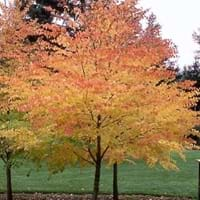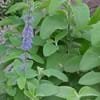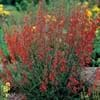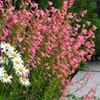Life Span
Perennial
Perennial
Type
Flowering Plants
Tree
Origin
Asia, Europe
Eastern Asia, China, Japan
Types
American Lily of the Valley, European Lily of the Valley, Japanese Lily of the valley.
Heronswood Globe , Kreukenberg Dwarf
Habitat
Banks, Broad-Leaved Forests, coppices, Dry and Young forest Heaths, Forest margins, Ridges, Rocky Ridges
shaded moist road banks, Wet Woods
USDA Hardiness Zone
4-8
4-8
Sunset Zone
A1, A2, A3, H1, H2, 1a, 1b, 2a, 2b, 3a, 3b, 4, 5, 6, 7, 14, 15, 16, 17, 18, 19, 20
2b, 3a, 3b, 4, 5, 6, 14, 15, 16, 18, 19, 20
Habit
Mat-forming
Oval or Rounded
Flower Color
Pink, White
Red, Green
Flower Color Modifier
Not Available
Bicolor
Fruit Color
Not Available
Green, Copper, Sandy Brown
Leaf Color in Spring
Dark Green
Purple, Light Green, Bronze
Leaf Color in Summer
Dark Green, Green
Green
Leaf Color in Fall
Green, Yellow green
Yellow, Gold, Orange Red
Leaf Color in Winter
Not Available
Not Available
Leaf Shape
Bell Shaped
Heart-shaped
Plant Season
Fall, Spring, Summer
Spring, Summer, Fall, Winter
Sunlight
Part sun, Partial shade
Full Sun, Partial Sun
Type of Soil
Moist, Well drained
Clay, Loam
The pH of Soil
Acidic, Neutral
Acidic, Neutral
Soil Drainage
Not Available
Well drained
Bloom Time
Late Spring, Spring
Early Spring
Tolerances
Not Available
Not Available
Where to Plant?
Container, Ground, Pot
Ground
How to Plant?
From Rhizomes, Seedlings
Seedlings, Transplanting
Plant Maintenance
Medium
Medium
Watering Requirements
Keep the ground moist but not water-logged, Requires a lot of watering, Water twice a day in the initial period, Water when soil is dry
Keep ground moist, Use Mulches to help prevent water loss during hot and windy weather
In Summer
Lots of watering
Lots of watering
In Spring
Moderate
Moderate
In Winter
Average Water
Average Water
Soil pH
Acidic, Neutral
Acidic, Neutral
Soil Type
Moist, Well drained
Clay, Loam
Soil Drainage Capacity
Not Available
Well drained
Sun Exposure
Part sun, Partial shade
Full Sun, Partial Sun
Pruning
Do not prune during shooting season, Prune after harvesting, Prune in late summer or fall, Prune to stimulate growth, Remove deadheads
Prune if you want to improve plant shape, Remove dead branches
Fertilizers
All-Purpose Liquid Fertilizer
All-Purpose Liquid Fertilizer, Apply 10-10-10 amount
Pests and Diseases
Anthracnose, Aureobasidium leaf spot, Foliar nematode, Leaf spot, Mealybugs, Rust, Southern blight
Bacterial leaf spot, Leafminers, Red blotch
Plant Tolerance
Drought
Salt and Soil Compaction, Shade areas, waterlogging
Flowers
Yes
Insignificant
Flower Petal Number
Not Available
Not Available
Edible Fruit
Not Available
No
Fragrant Fruit
Not Available
No
Fragrant Leaf
Not Available
Yes
Foliage Texture
Coarse
Medium
Foliage Sheen
Not Available
Matte
Self-Sowing
Not Available
Yes
Attracts
Bees
Birds, Butterflies
Allergy
Headache, Nausea, Vomiting
sneezing, Sore eyes
Aesthetic Uses
Beautification, Showy Purposes
Beautification, Cottage Garden
Beauty Benefits
Not Available
Making cosmetics, Skin Problems
Environmental Uses
Air purification
Shadow Tree, soil stabilisation
Medicinal Uses
Chest pain, Swelling
Not Available
Part of Plant Used
Flowers, Leaves, Root
Whole plant
Other Uses
Air freshner, Cosmetics, Oil is used for aromatherapy, Oil is used in perfume, soaps, creams, etc., Showy Purposes, Used As Food, Used as Ornamental plant, Used for fragrance
Showy Purposes, Used as Ornamental plant, Used in pulpwood and lumber production
Used As Indoor Plant
Yes
No
Used As Outdoor Plant
Yes
Yes
Garden Design
Bedding Plant, Bog Garden, Cutflower, Edging, Foundation, Mixed Border
Feature Plant, Shade Trees, Street Trees
Botanical Name
Convallaria majalis
CERCIDIPHYLLUM japonicum
Common Name
Lily of the Valley
Katsura Tree
In Hindi
कामुदिनी
Cercidiphyllum
In German
Maiglöckchen
Kuchenbäume
In French
Lily of the Valley
Cercidiphyllum
In Spanish
Lirio de los valles
Cercidiphyllum
In Greek
Κρίνος της κοιλάδας
Cercidiphyllum
In Portuguese
Lírio do Vale
Cercidiphyllum
In Polish
Lilia doliny
Grujecznik
In Latin
Lílium convállium
Cercidiphyllum
Phylum
Tracheophyta
Magnoliophyta
Class
Magnoliopsida
Magnoliopsida
Order
Asparagales
Hamamelidales
Family
Asparagaceae
Cercidiphyllaceae
Genus
Convallaria
Cercidiphyllum
Clade
Angiosperms, Monocots
Angiosperms, Eudicots
Tribe
Not Available
Not Available
Subfamily
Nolinoideae
Not Available
Number of Species
Not Available
Importance of Lily of the Valley and Katsura Tree
Want to have the most appropriate plant for your garden? You might want to know the importance of Lily of the Valley and Katsura Tree. Basically, these two plants vary in many aspects. Compare Lily of the Valley and Katsura Tree as they differ in many characteristics such as their life, care, benefits, facts, etc. Every gardener must at least have the slightest clue about the plants he wants to plant in his garden. Compare their benefits, which differ in many ways like facts and uses. The medicinal use of Lily of the Valley is Chest pain and Swelling whereas of Katsura Tree is Not Available. Lily of the Valley has beauty benefits as follows: Not Available while Katsura Tree has beauty benefits as follows: Not Available.
Compare Facts of Lily of the Valley vs Katsura Tree
How to choose the best garden plant for your garden depending upon its facts? Here garden plant comparison will help you to solve this query. Compare the facts of Lily of the Valley vs Katsura Tree and know which one to choose. As garden plants have benefits and other uses, allergy is also a major drawback of plants for some people. Allergic reactions of Lily of the Valley are Headache, Nausea and Vomiting whereas of Katsura Tree have sneezing and Sore eyes respectively. Having a fruit bearing plant in your garden can be a plus point of your garden. Lily of the Valley has showy fruits and Katsura Tree has showy fruits. Also Lily of the Valley is flowering and Katsura Tree is not flowering . You can compare Lily of the Valley and Katsura Tree facts and facts of other plants too.





